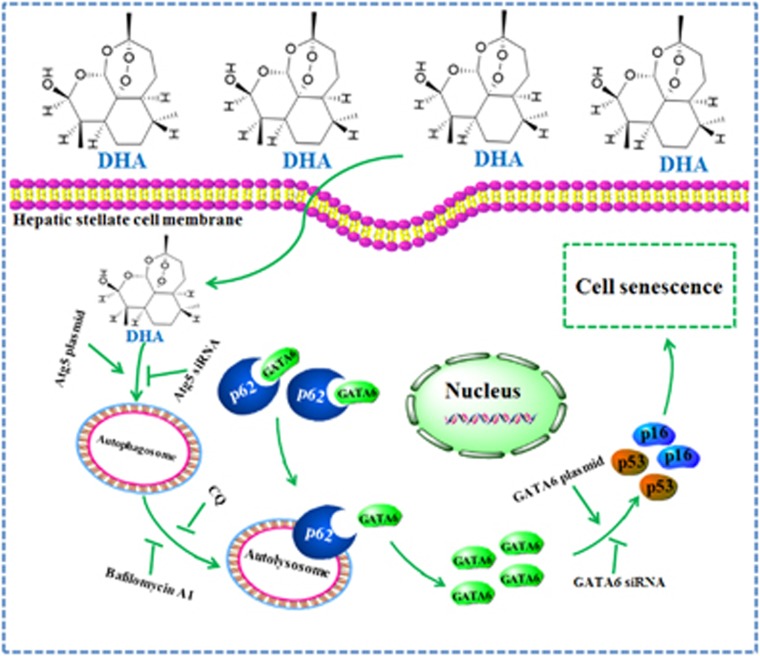Figure 8.
Schema of the underlying mechanism of DHA-induced HSC senescence. DHA treatment induces the accumulation of senescent activated HSCs in rat fibrotic liver, and promotes the expression of senescence markers p53, p16, p21 and Hmga1 in cell model. Importantly, GATA6 is identified as an upstream molecule to regulate p53 and p16 activation. siRNA-mediated knockdown of GATA6 dramatically abolishes DHA-induced activation of p53 and p16, and in turn inhibits HSC senescence. Interestingly, DHA also appears to increase the autophagosome generation and autophagic flux via an mTOR-dependent mechanism in activated HSCs, which are potential causes of DHA-induced GATA6 accumulation and HSC senescence. Autophagy depletion impairs GATA6 accumulation, while autophagy induction shows a synergistic effect with DHA. Attractively, p62 is found to act as a negative regulator of GATA6 accumulation, but this regulation is suppressed by DHA treatment, thereby stabilizing GATA6.Treatment of cultured HSCs with the autophagy inhibitors, led to an inhibition of DHA-induced p62 degradation, and in turn, prevents DHA-induced GATA6 accumulation and HSC senescence

